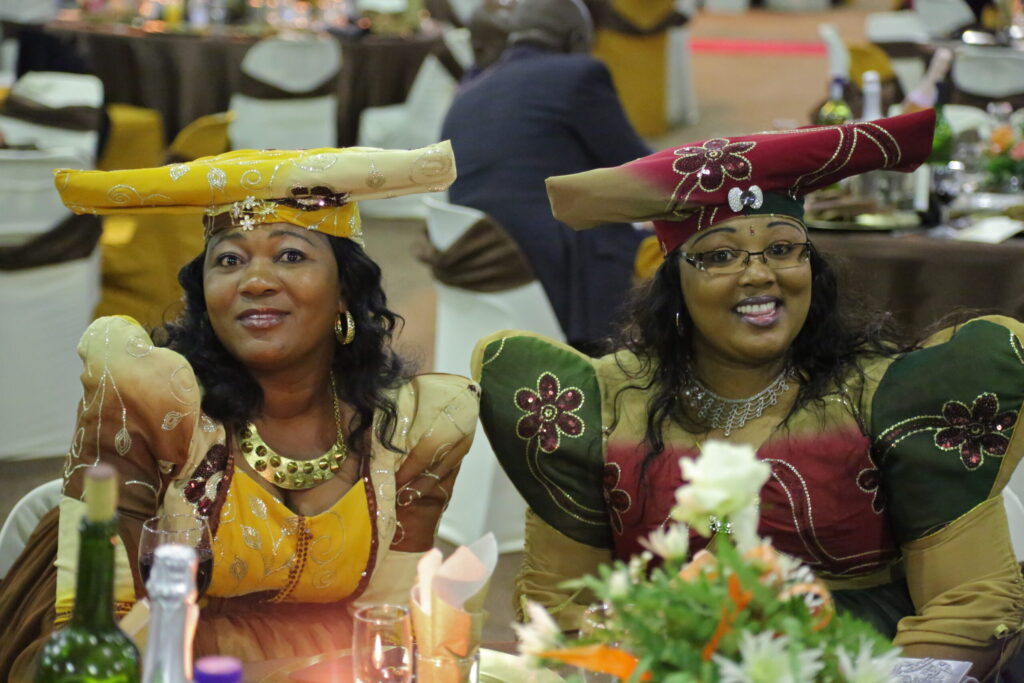The Herero

It is believed that in ancient times the Herero lived in a legendary African marshland of water and reeds known as Roruu before undertaking their southern migration down the African continent. While this legendary marshland has never been traced, according to oral tradition they moved southwards from the great lakes of East Africa, crossed into present-day Zambia and southern Angola and arrived at the Kunene River in about 1550.
After inhabiting Kaokoland (today’s Kunene Region) for some 200 years, the Herero and the Mbanderu migrated independently of each other in a southerly direction, leaving the Himba and Tjimba tribes behind. This brought them into conflict with the Nama occupying the southern and central regions of the territory. They reached the Swakop River valley towards the middle of the 18th century, and during the 19th century moved eastwards.
Eventually, the Herero established themselves in the central region, and the Mbanderu settled east of Windhoek.
The Herero–German wars of 1904–1907 resulted in a drastic decimation of the Herero. A very large number were killed or succumbed as they fled, according to some estimates as much as eighty per cent of the population. The survivors were left with no land and cattle, and more or less disintegrated as a group, many fleeing to Botswana (the former Bechuanaland).
When South Africa took over the administration of South West Africa in 1915 they began to return and were gradually allocated home areas at Aminuis, Epukiro, Waterberg East, Otjohorongo and Ovitoto.
Despite the hardships and suppression of their traditional cultures, they managed to keep their bonds of family life, tribal solidarity and national consciousness alive, as is evidenced by the annual Herero Festival in August on Maharero Day when various units of paramilitary organisations parade before their leaders in full regalia through the streets of Okahandja.
The Mbanderu and Zeraua tribes honour their captains in festivals in Gobabis and Omaruru. It was during the nineteenth century, under the influence of the wives of missionaries, that Herero women developed the wide multi-skirted Victorian-style dresses that the more traditional women still wear today.
The distinctive headdress made from fabric characterised by two points on either side symbolises cattle horns.
Today there are over 130 000 Herero-speaking Namibians in the country, subdivided into the following groups: The Herero with the traditional chiefdoms of Maharero in the Okahandja area, the Zeraua in the Omaruru environs; the Kambazembi of Waterberg; the Ndamuranda; the Mbanderu of eastern Namibia, especially the Gobabis District and the reserves of Epukiro, Otjombinde and Aminuis; the Tjimba Herero of Kaokoland (Kunene) and the Himba of the Kunene Region, which are discussed below as a separate group.

